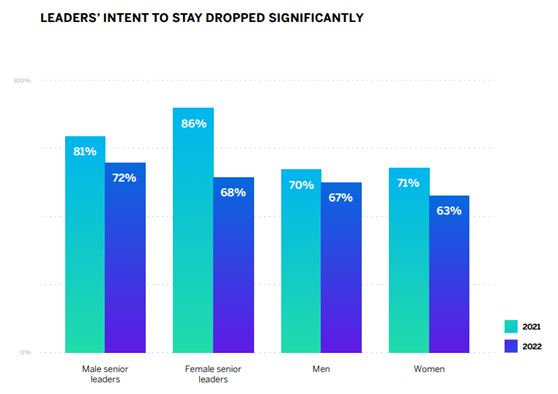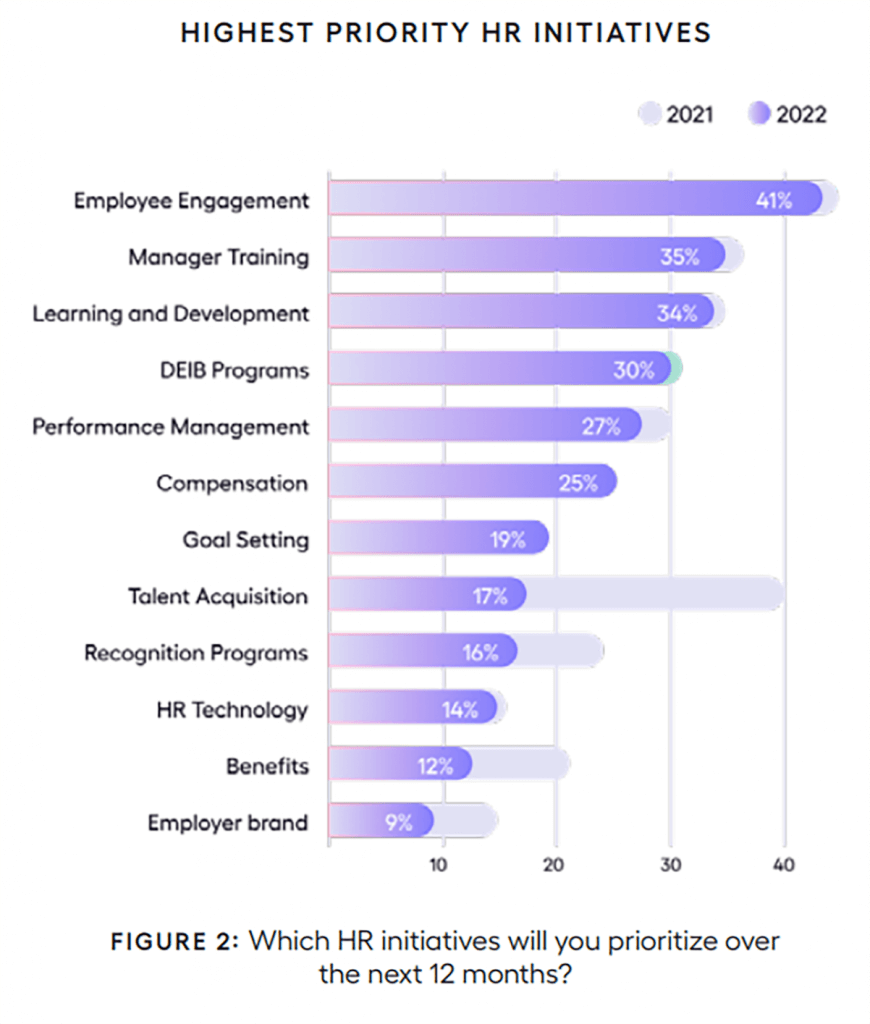Written by Peter Armaly
“A painting to me is primarily a verb, not a noun, an event first and only secondarily an image.” – Elaine de Kooning, 1918-1989
I’ve never been completely comfortable with the mantra being repeated in some corners that companies can grow by focusing solely on their existing customers. It’s too simple a remedy for today’s economic illness and it dismisses the need to understand at a broader market level, the opportunities presented by other challenges your company might be able to uniquely solve, even during downturns. The working theory seems to be that since the cohort of existing customers is where your established revenue is, and that cohort represents where you have already spent vast sums of money and have done most of the work to be noticed and to capture attention, then your future revenue should be more expansive if you direct your energy towards that cohort since you now have a captive audience to focus on that will exponentially invest in your company’s solutions.
It’s a theory because, a. it’s unproven, b. it depends on those customers being solvent and growing over a long period of time into the future, and c. it presupposes a lot of procedural motions by the company that are not sure-things. Specifically, it assumes that a dependable orchestration of coordinated and programmatic cross-organizational effort is taking place. It expects that the organizations involved can deliver on their part of the mission with precision, with consistency, while maintaining healthy margins, and with value-add relevance (for the customer). It presupposes, too, that the main actors in this orchestration – Sales, Product, Support, and Customer Success – will be at the top of their collaborative games during the entire lifecycle of a customer in order to ensure that the potential value for that customer of an expanded investment is evident, even obvious based on the company’s historical record of delivering orchestrated outcomes. None of this is a given in most places and it’s not easy to do.
Another thing this theory requires is a high level of engagement from all employees in each of those organizations. A misfiring of a process that causes delays or errors for customers, or a discordant note in that orchestration as a result of a poorly handled interaction, can result in a dissatisfied customer. These are bad enough. But in those scenarios, once the problem is identified, the possibility exists for it to be fixed and the relationship to get back on track. But there’s another, more pernicious problem that runs in parallel and that simmers largely unnoticed beneath the surface in many companies. It’s one that is far more difficult to identify and fix. If you think of a company as a fabric that’s made up of hundreds or thousands of people working together to achieve some set of predictable and repeatable business outcomes, then of all the things that can go wrong, the most dangerous of all occurs at the individual employee level. It’s at that level where risk to the fabric’s integrity is greatest. It’s the level where employees misunderstand aspects of their mission, are possibly misaligned with the team and corporate strategies, perhaps are poorly trained, or are even checked out in their roles.
You know who is responsible for ensuring that none of those things happen? The front-line manager. You know what a favorite tactic of managers is for ensuring team and individual execution are what they should be? Meetings. I think of such team and one-on-one meetings as “the thousand quiet moments.” That’s because they’re mostly taken for granted as just happening on schedule, all the time, regardless of what else is going on. Their true value is rarely explored beyond trite cliches. They’re rarely, if ever, seriously factored into an analysis of how a company succeeds and, they’re rarely the subject of any sort of serious examination of how a company stumbles. CEOs are typically seen as the company’s linchpin, but (with a sheepish nod to my CEO) I think that’s wrong. I think front-line leadership is the linchpin and there are troubling signs ahead for the general well-being of that group.
Leader Engagement
The two charts below speak to the toll felt by 14,000 respondents to three years of pandemic and from today’s global economic upheaval. Those professionals responded from around the globe to a survey that Qualtrics ran for their 2022 Employee Experience Trends.
One of their key findings was that the commitment of leaders to their employers is dropping. This is particularly acute for female leaders, especially for female leaders that lead other leaders (i.e. Director and above) who are leaving at an even greater pace. These are warning signals for business leaders that companies aren’t doing enough to support and address the challenges these people face in their roles.
 |
 |
| Credit: Qualtrics – 2022 Employee Experience Trends Report |
The report offers ideas for company executives to consider on how to combat these findings – see the table below. The ideas are almost impossible to argue with, because of their inherent logic, but they are also – at least to me – a perfect illustration of the increasing pressure from the heightened expectations being placed on leaders throughout organizations.

Credit: Qualtrics – 2022 Employee Experience Trends Report
When looking at the “What’s happening in the workplace” column, it helps my argument to add them to the list of focus areas we already know good leaders should be executing against today, regardless of anything else. We know, for example, that leaders are universally expected to manage the work of the people within their organizations so that expectations are met. That’s how the business world has always defined management. That’s always been understood. That means that leaders are expected to understand each of the roles played by the people that report to them sufficiently enough that they can guide them intelligently towards stronger execution and performance. Managing that performance means, in part, using tools like year-end performance reviews that another study showed makes 22% of employees cry.
Additionally, they’re expected to think strategically enough that they will know how to participate in annual planning exercises appropriate for their level, and to steer their team on a daily basis in the direction that hews closest to the company’s governing strategy as defined by the executive team. On top of all that, they are expected to do all of this by consistently modeling the cordial, respectful, and collaborative behavior they hope to see from the people in their organizations and through the application of fairmindedness, empathy, and proactive communications that are human-centered and supportive. And finally, and ideally, they need to do all these things by employing inspirational coaching methods (because management by decree has long been discredited). Maybe all this laundry list of expectations is why some research shows that 50-75% of managers will fail.
It’s overwhelming but the missing piece to make life better isn’t difficult
Ready for another chart that I think reinforces the pile-on of expectations that we see for leaders? From Lattice, a people management platform, comes another report called the 2023 State of People Strategy. In it you will find the chart below that shows the initiatives for Human Resource organizations, ranked in order of priority. You might respond by saying… yeah, but HR priorities don’t translate to priorities for everyone else. That’s fair and may be true, but they (the priorities) do act as proxies for what’s ailing companies.
Look at the list. Even a quick glance will tell you that since engaged employees is the top focus area, it likely means that companies are worried about employee retention and perhaps, even, performance. And since manager training is second, it should be interpreted as an acknowledgment that managers need more tools in order to do their job more effectively.
HR priority lists are effective ways to discern the variety of worries that senior executives have about the ability for their talent to be successful and the hurdles that have been identified that are preventing their success. In this argument, I’m saying that employee engagement and manager training are company problems that are intertwined.
Credit: Lattice – 2023 State of People Strategy
Let’s relate all this to Customer Success
If employee engagement and manager training are two areas of need in your organization, perhaps there is a way to address both by being intentional about how team and one-on-one meetings are conducted. But before we go into that, maybe it will help to better understand what motivates employees.
In a recent article called, Why Do We Work?, Bain & Co. presented six archetypes that describe most workers. While elements from each of the six (Operator, Artisan, Striver, Giver, Explorer, Pioneer) are seen in the variety of roles that inhabit a typical Customer Success organization, I feel the one that best represents the kind of forward-thinking, proactive, strategic, and collaborative spirit and behaviors of the best in Customer Success today is the Pioneer. Bain describes the archetype as “… on a mission to change the world, autonomous and risk tolerant, identifies profoundly with their work, and has a vision that is often at least partially altruistic.”
If Customer Success is ever going to deliver on its promise as the agent of transformation (for customers and the company) that many of us envision, it will need to encourage and nurture that sort of Pioneer mentality and behavior. So how should you, as a leader, think about getting the most out of Pioneers and opening pathways to their career growth? How can you leverage your meetings in order to nurture and expand upon the Pioneer spirit and drive?
Here are a few suggestions that have worked successfully for me off and on over the last twenty years, a period during which I led people leaders (Directors and Managers) and a variety of front-line teams of Sales Consultants, Premier Support Engineers, and Customer Success Managers.
In team meetings:
- Be intentional about demonstrating your authenticity as a growth leader for the people on your team – all your efforts should be focused on delivering on this more hopeful angle for the team
- Challenge the team to think expansively about the work they do and to express ideas for process improvement, for example, that they believe will provide improvements for downstream outcomes
- Support this intention by bringing outside content into the discussions that helps illuminate the subject and deepen its understanding, and don’t be afraid to make readings an occasional “homework” assignment – you’ll find that your most engaged employees become even more so
- Allow respectful debate within the team that clearly moves subjects forward
- Be bold about holding up as models the people exhibiting desired behaviors
- Frequently reinforce corporate messaging by deep diving the contents of a past all-hands or a post on LinkedIn from one of the senior leaders
- Invite guest speakers to reinforce messaging you believe will benefit the team
In one-on-one meetings:
- Help individuals understand how the work they do is vital and how it contributes to the corporate mission (help them connect the dots)
- Be intentional about enabling individuals, in specific ways, to grow in directions that excite them – yes, even if it means they might eventually leave – and that will contribute to the business (this requires honesty and strong strategic planning skills)
What’s in it for you in conducting yourself this way?
If you’re a leader, you will immediately see what’s in those points for you. If you’re a leader, you get energized by the growth and achievement of the people you’re assigned to lead. If you’re a leader, you find fulfillment when your team achieves desired results.
Leadership is often a lonely job, but it’s a gratifying one when it’s understood that its strength and worth come through the process of helping others to contribute to the strategic mission.
Help others and you’ll find meaning. It’s a tenet many of the world’s religions profess, and it applies here too. Being intentional about delivering value in your thousand quiet moments may just bring more meaning, not only to those you lead, but to you, too.


